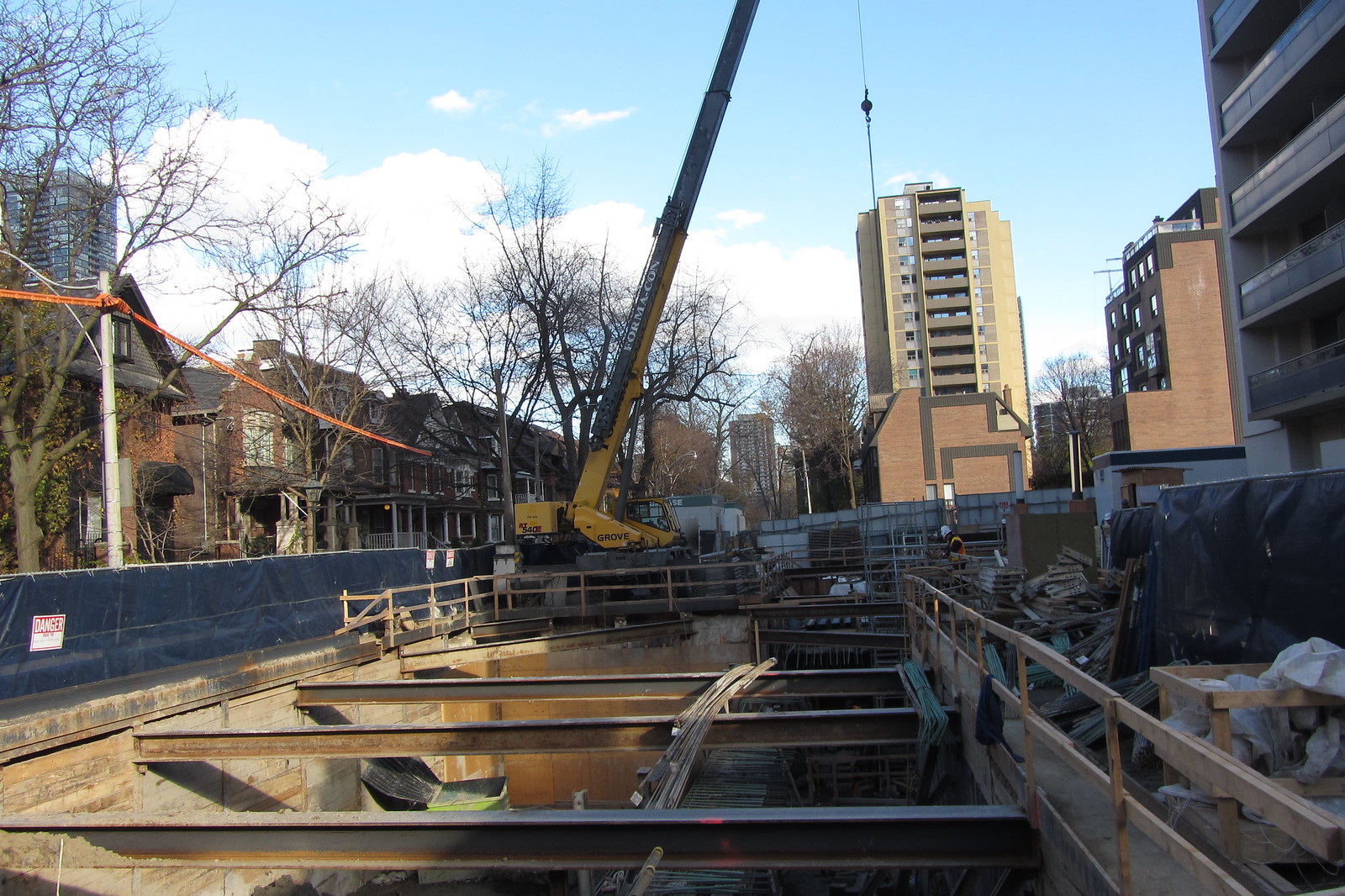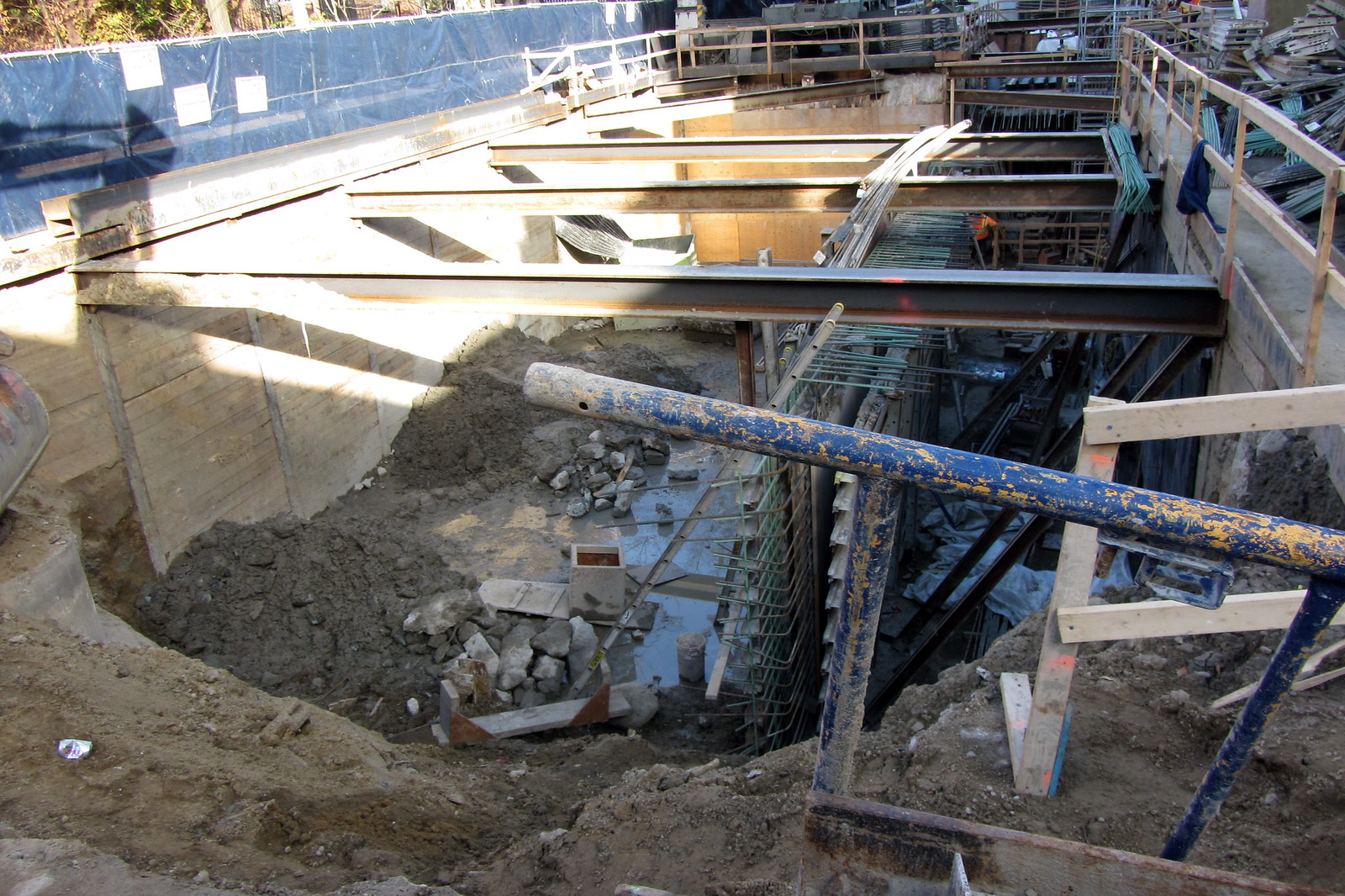You are using an out of date browser. It may not display this or other websites correctly.
You should upgrade or use an alternative browser.
You should upgrade or use an alternative browser.
Toronto Totem Condos | 64m | 18s | Worsley Urban | RAW Design
- Thread starter AlbertC
- Start date
salsa
Senior Member
TTC second exit - progress update
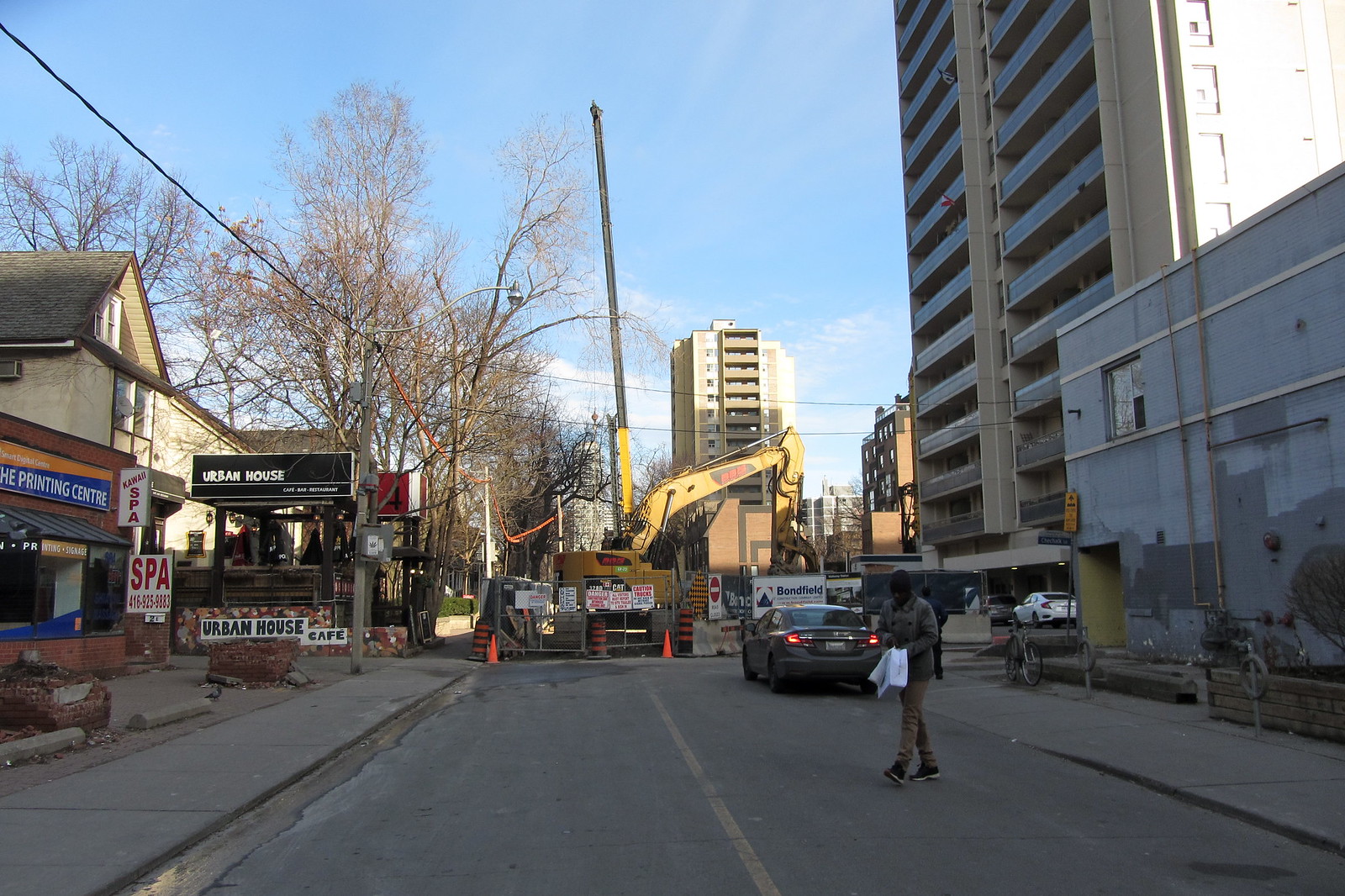

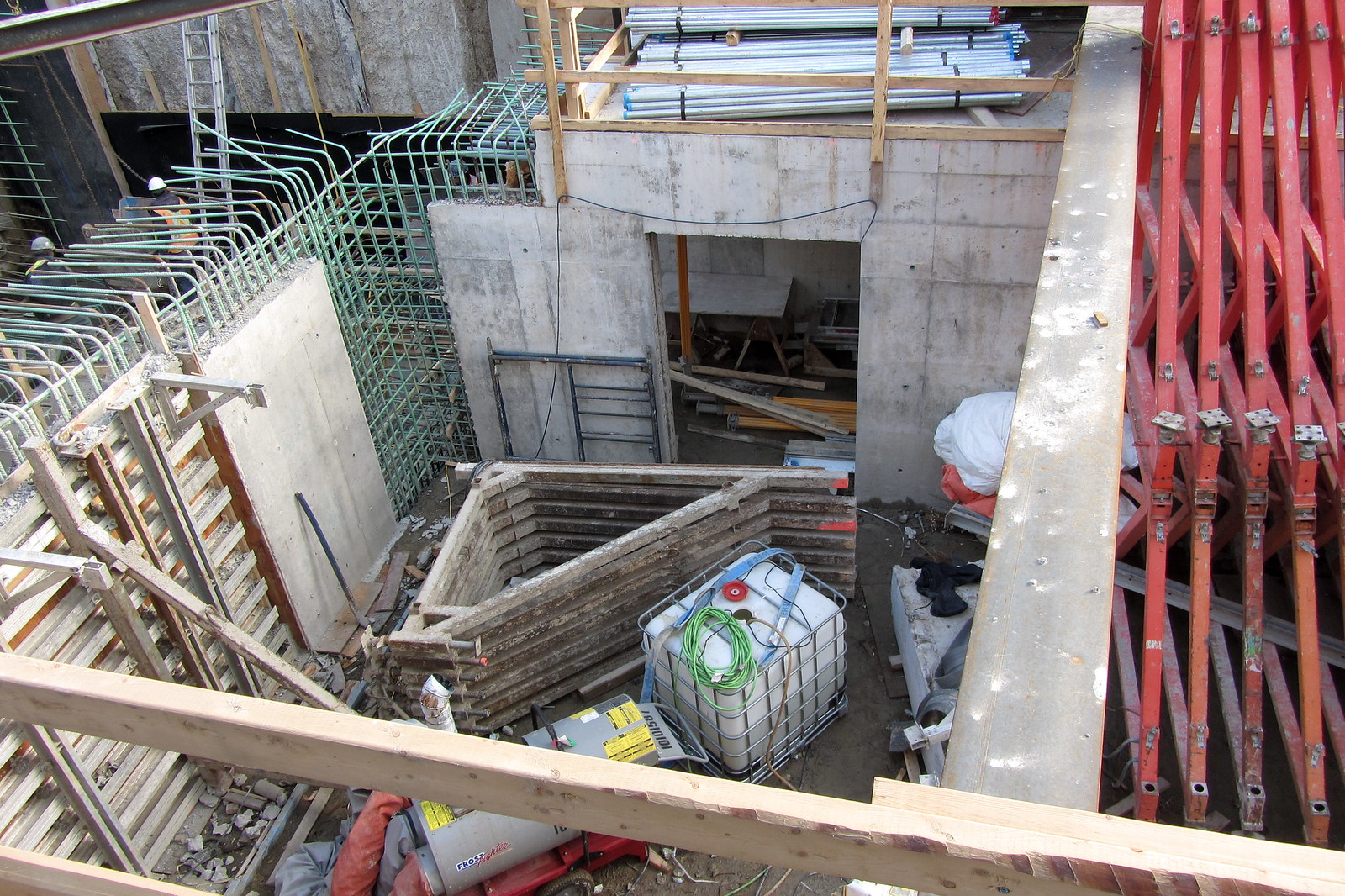
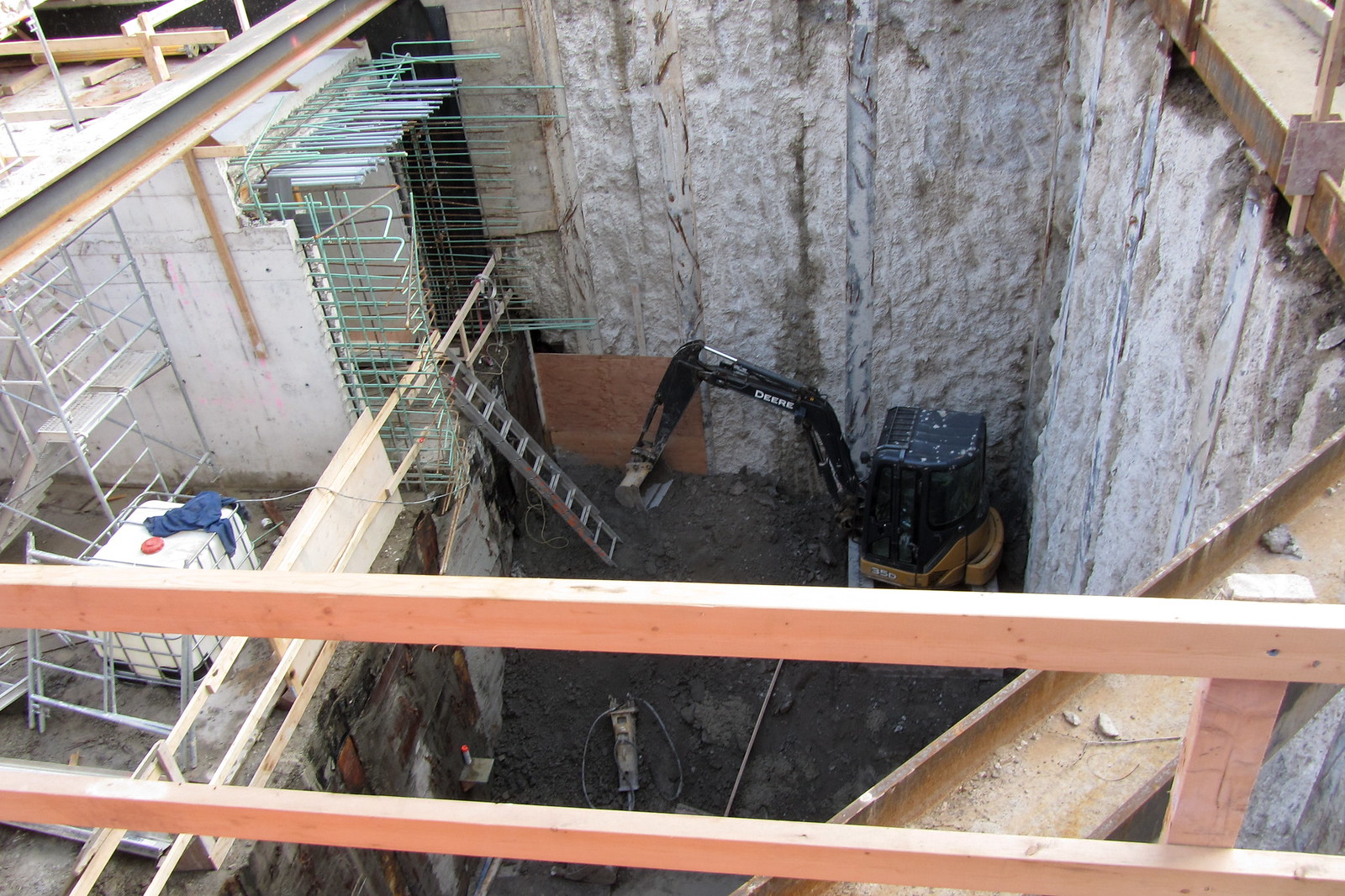
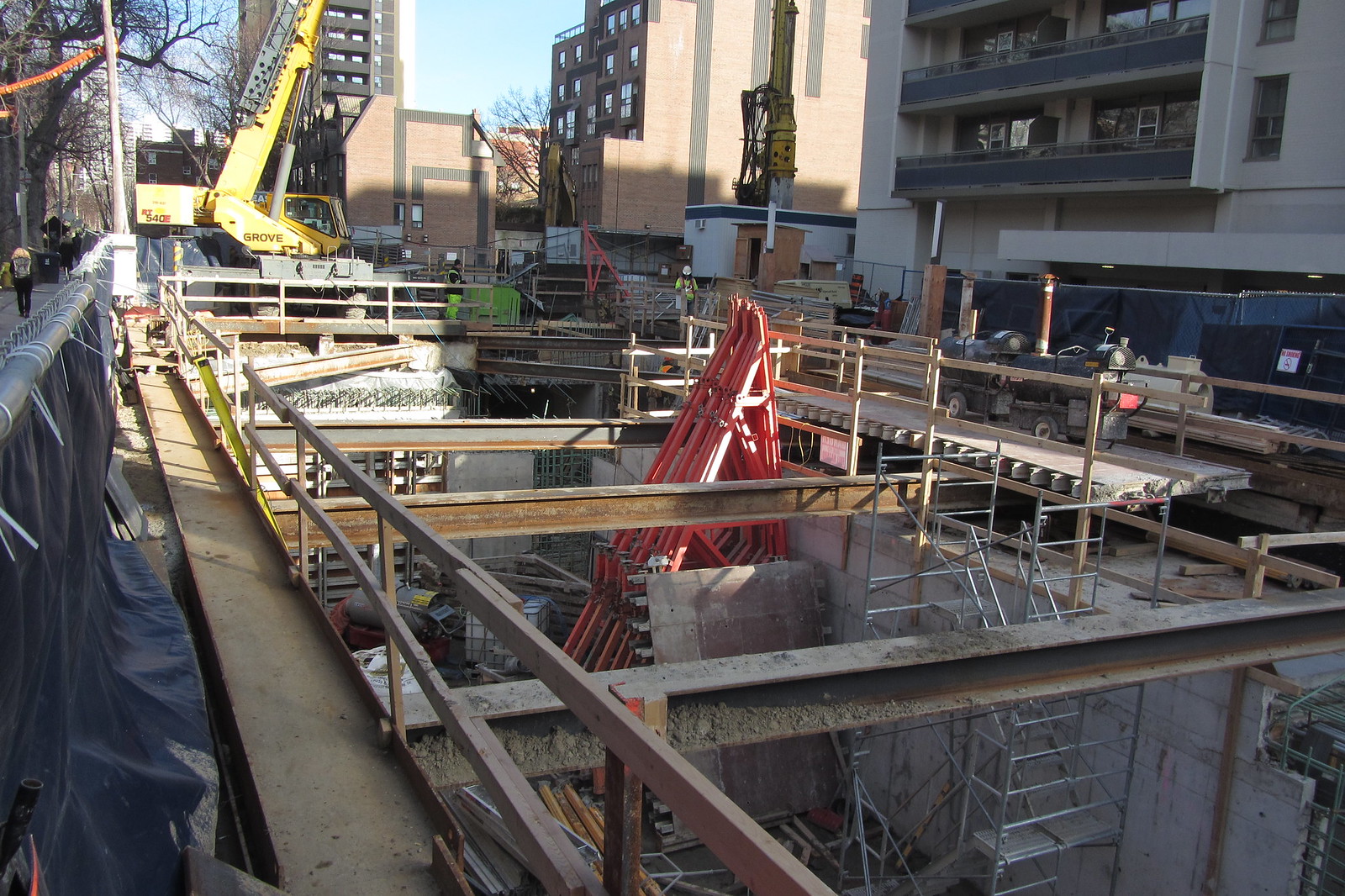





AlvinofDiaspar
Moderator
Great to see epoxy coated rebars being used.
AoD
AoD
Armour
Senior Member
What's the difference?Great to see epoxy coated rebars being used.
AoD
AlvinofDiaspar
Moderator
What's the difference?
The rebars are less susceptible to rusting from road salt runoffs - which means the structure will be more durable in the long run.
AoD
BurlOak
Senior Member
MTO stopped using epoxy coated (green) rebar about 10 years ago.
It was found that the epoxy coating degrades over time in the high alkalinity of concrete. This takes about 35 to 40 years. Coincidentally, it takes the chloride from road salt about 35 or 40 years to reach the rebar level for common concrete cover values (70mm).
Thus, just when the epoxy coating is needed, it fails.
MTO tightened the specs on concrete, making it more impervious to chloride impress. Concrete surfaces in direct contact with salt water are waterproofed, and sometimes sealed. In select locations, premium reinforcement is used. Either stainless steel, semi stainless steel (MMFX)(coming soon), or Glass Fibre Reinforced Polymer (GFRP) reinforcement.
It was found that the epoxy coating degrades over time in the high alkalinity of concrete. This takes about 35 to 40 years. Coincidentally, it takes the chloride from road salt about 35 or 40 years to reach the rebar level for common concrete cover values (70mm).
Thus, just when the epoxy coating is needed, it fails.
MTO tightened the specs on concrete, making it more impervious to chloride impress. Concrete surfaces in direct contact with salt water are waterproofed, and sometimes sealed. In select locations, premium reinforcement is used. Either stainless steel, semi stainless steel (MMFX)(coming soon), or Glass Fibre Reinforced Polymer (GFRP) reinforcement.
AlvinofDiaspar
Moderator
MTO stopped using epoxy coated (green) rebar about 10 years ago.
It was found that the epoxy coating degrades over time in the high alkalinity of concrete. This takes about 35 to 40 years. Coincidentally, it takes the chloride from road salt about 35 or 40 years to reach the rebar level for common concrete cover values (70mm).
Thus, just when the epoxy coating is needed, it fails.
MTO tightened the specs on concrete, making it more impervious to chloride impress. Concrete surfaces in direct contact with salt water are waterproofed, and sometimes sealed. In select locations, premium reinforcement is used. Either stainless steel, semi stainless steel (MMFX)(coming soon), or Glass Fibre Reinforced Polymer (GFRP) reinforcement.
It will be interesting to see how the this applies to a non-highway setting.
AoD
dragontea
New Member
uwphysmed
New Member
SunnyWorld
New Member
Nice pictures. It is delayed? Do we know when it will be completed?
Ramako
Moderator
Nice pictures. It is delayed? Do we know when it will be completed?
What makes you think it's delayed?
SunnyWorld
New Member
I am not sure - I could be mistaken- I thought it will be completed by end of this year or early next year, but seems they just did the foundation?
salsa
Senior Member
B
barit
Guest
Thanks for the clarification. Since you obviously know quite a bit about rebar, can you answer a question? When the concrete in a form with rebar in it has hardened enough for the next pour, say for a column, is there a naturally weak spot between the dry and the new concrete?MTO stopped using epoxy coated (green) rebar about 10 years ago.
It was found that the epoxy coating degrades over time in the high alkalinity of concrete. This takes about 35 to 40 years. Coincidentally, it takes the chloride from road salt about 35 or 40 years to reach the rebar level for common concrete cover values (70mm).
Thus, just when the epoxy coating is needed, it fails.
MTO tightened the specs on concrete, making it more impervious to chloride impress. Concrete surfaces in direct contact with salt water are waterproofed, and sometimes sealed. In select locations, premium reinforcement is used. Either stainless steel, semi stainless steel (MMFX)(coming soon), or Glass Fibre Reinforced Polymer (GFRP) reinforcement.

